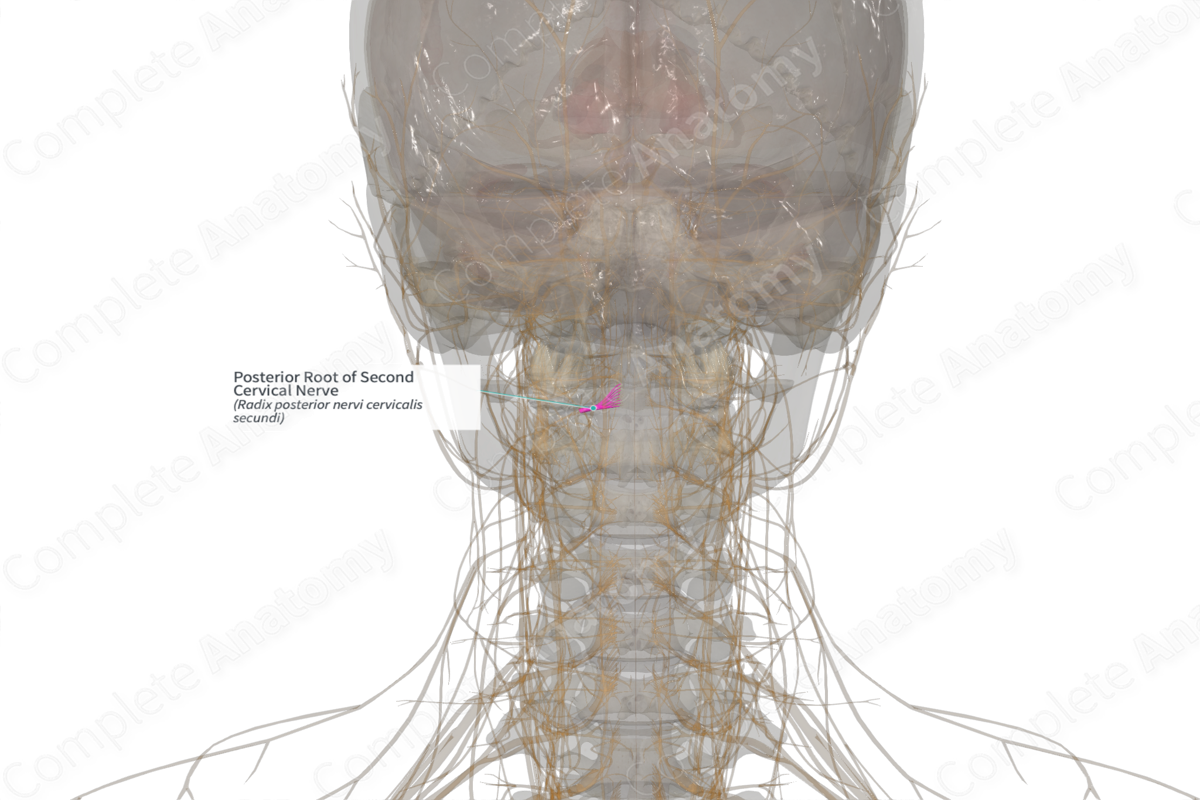
Posterior Root of Second Cervical Nerve (Right)
Radix posterior nervi cervicalis secundi
Read moreQuick Facts
Origin: Second cervical nerve.
Course: Medially towards the posterior side of the spinal cord.
Branches: None.
Supply: Afferent fibers from the dorsal rami transmit sensory information from the scalp and the posterior auricular region.
Origin
The posterior root of the second cervical nerve originates just lateral to or in the intervertebral foramen, between the C2 vertebra (axis) below and the C1 vertebra (atlas) above. This corresponds to the point where the cervical nerve splits into anterior and posterior roots.
Course
The posterior root of the second cervical nerve runs medially towards the posterior side of the spinal cord. Adjacent to the appropriate spinal cord level, the posterior root splits into smaller rootlets, which enter the posterior spinal cord in line with the dorsal horn of the gray matter.
Branches
There are no branches of the posterior root of the second cervical nerve. The proximal end of the posterior root has a bulge called the spinal (or dorsal root) ganglion, which is the location of the neuronal cell bodies of the neurons that form the posterior root.
Supplied Structures
Sensory cutaneous fibers ending in the greater occipital nerve receive information from the scalp. The second cervical nerve also serves as a conduit for the sensory neurons innervating the meninges and the proprioceptive nerve endings from the sternocleidomastoid muscle.
Learn more about this topic from other Elsevier products



